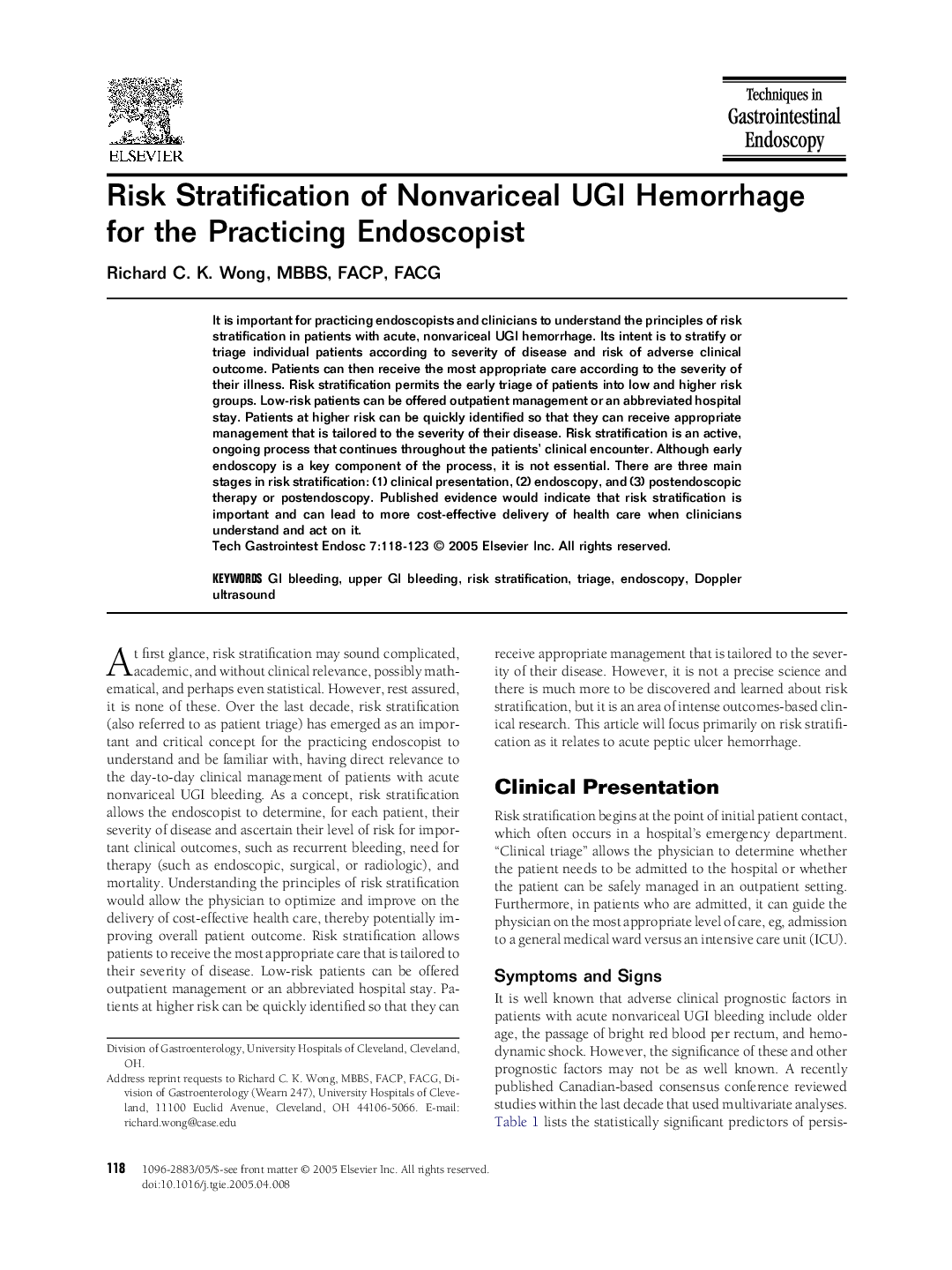| Article ID | Journal | Published Year | Pages | File Type |
|---|---|---|---|---|
| 9256975 | Techniques in Gastrointestinal Endoscopy | 2005 | 6 Pages |
Abstract
It is important for practicing endoscopists and clinicians to understand the principles of risk stratification in patients with acute, nonvariceal UGI hemorrhage. Its intent is to stratify or triage individual patients according to severity of disease and risk of adverse clinical outcome. Patients can then receive the most appropriate care according to the severity of their illness. Risk stratification permits the early triage of patients into low and higher risk groups. Low-risk patients can be offered outpatient management or an abbreviated hospital stay. Patients at higher risk can be quickly identified so that they can receive appropriate management that is tailored to the severity of their disease. Risk stratification is an active, ongoing process that continues throughout the patients' clinical encounter. Although early endoscopy is a key component of the process, it is not essential. There are three main stages in risk stratification: (1) clinical presentation, (2) endoscopy, and (3) postendoscopic therapy or postendoscopy. Published evidence would indicate that risk stratification is important and can lead to more cost-effective delivery of health care when clinicians understand and act on it.
Related Topics
Health Sciences
Medicine and Dentistry
Gastroenterology
Authors
Richard C.K. (FACP, FACG),
